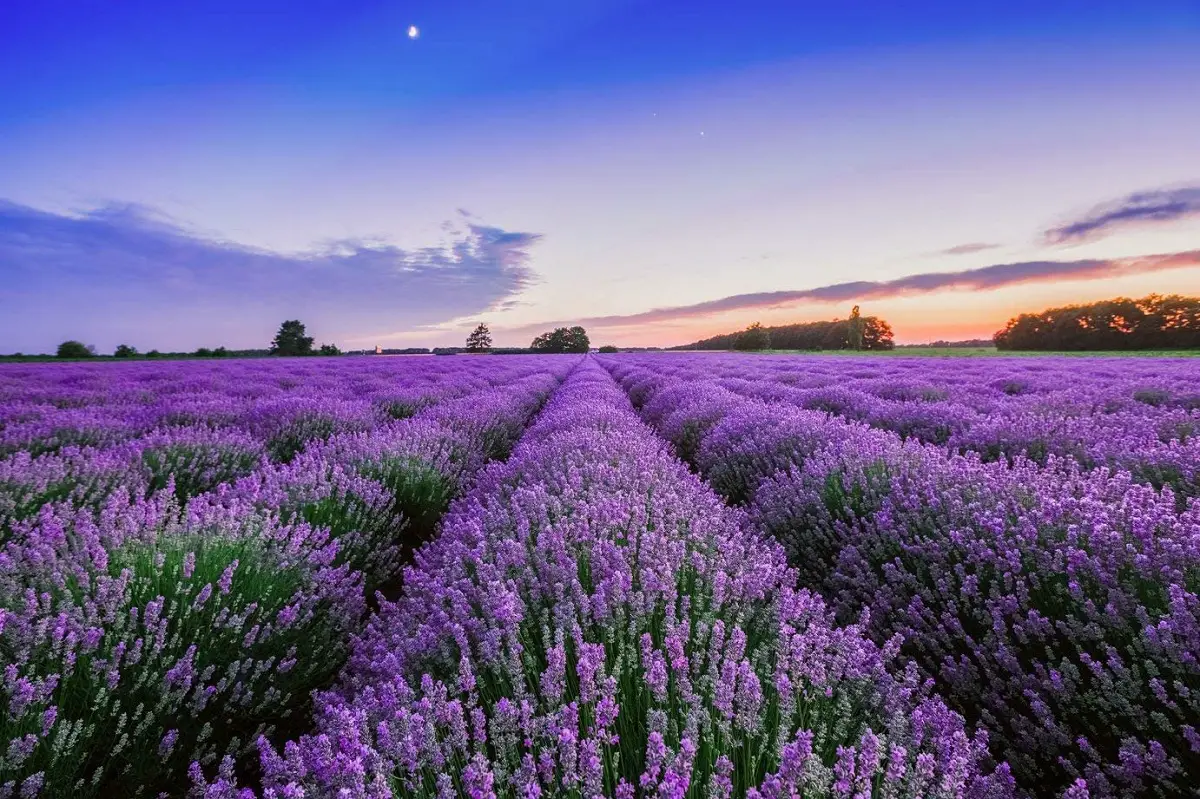
The lavender It is a plant that still continues to confuse many people today since they confuse it with lavender. Both belong to the Lamiaceae family but have differences in terms of characteristics and chemical composition. Both have a different origin and also different uses.
In this article we are going to tell you all the characteristics, care and differences between lavender and lavender.
Key features

The lavender is a perennial shrub that It is mistakenly known as lavender. It is a plant from which a rich essential oil is obtained. It is quite popular since it has great beauty and flowers with a pleasant aroma. Flowering occurs during the month of August when temperatures are very high.
It is a plant that comes from the dry soils of the Mediterranean and is a wild plant that needs to be in the sun. And it is that he loves sunlight. Although there is also a record of this plant naturally from Africa, its beauty has meant that it is gradually being cultivated in other territories of the world such as Europe, Australia and the United States. What is used not only as ornamental plant, but as a commercial or medicinal plant.
It grows naturally in dry and rocky terrain and has purple flowers not attached to each other. If the environmental conditions are the appropriate ones, it can grow to a maximum of two meters. The leaves are green with a single in the middle that grows upwards. It has medicinal properties and to be able to develop them well it needs a lot of sunlight.
Lavender properties

An exceptional component of lavender is its essential oil. It has terpene alcohols known by the names of geraniol and linalool. These essential oils are found in some well-known flowers such as roses and other aromatic plants. The calming effect of the nervous system that lavender produces is thanks to the presence of these alcohols. It also stands out for its content in harmful that can be found in other foods such as grapes, tea or coffee. It is the presence of all these compounds that gives the plant certain anti-inflammatory and astringent properties as well as a powerful antioxidant effect.
Not only is this plant known for its beauty, it also has commercial and medicinal uses. Lavender has been studied by traditional medicine for a long time and its antioxidant properties have been known to act directly on the cells of our body. The aging of the cells of our body is due to free radicals. It is these antioxidant characteristics that protect us from these free radicals. It works against aging itself, reduces the chances of contracting diseases such as cancer, cardiovascular and Alzheimer’s.
As for its calming effect, lavender has interesting anti-anxiety properties that have been extensively researched. The sense of smell may receive some active stimuli from lavender and cause relaxing effects or the nervous system. If infusions are administered, it is highly effective against states of anxiety, stress and fear.
Lavender properties

Its properties are similar to generic lavender but it has a few different nuances. And is that the lavender also produces a therapeutic essential oil that is obtained from nine. Among its properties it is often used as an antibacterial, abortifacient, and antiseptic. It has a use apart from the common ones, which is as an ointment. It is recommended to use it for all types of wounds, insect bites, eczema and burns. It also serves to raise the body’s defenses.
Among the physical properties of lavender we see that they are very similar to those of lavender. It has soothing, antiseptic and It also serves as a regenerator of skin cells. This type of plant is capable of balancing the nervous system, but unlike lavender, it has more calming than sedative effects. These effects are especially seen depending on how you prepare it. It can relax the mind and its chemistry promotes a feeling of joy. It can be effective against tiredness and decay.
Differences between lavender and lavender
In order to summarize the differences that exist between lavender, we could liken them to a conventional tomato and a cherry tomato. They are both tomatoes but they have somewhat different physical and chemical characteristics. Namely, both plants belong to the same family and look very similar. They share some similar characteristics because they are from the same family. However, it has certain different qualities and conditions that are defined by being different species.
It can be concluded that lavender and lavender are the same in terms of family, but they are different species. In terms of properties we can point out that lavender has more relaxing properties while lavender has more energizing properties. Both coincide in some aspects but are also distinguished in others that are essential. When using both plants in the medicinal field, some of their effects must be taken into account. For example, if we mark a patient who needs compounds to relax and calm the nervous system, we cannot lavish him. This is because this plant promotes our nervous state and gives us energy.
Lavender cultivation
It is a plant that prefers a semi-arid Mediterranean climate with warm temperatures. It grows naturally in dry climates and warm to cool winters. It needs good lighting and loose or open terrain. They must have good drainage and difficulty in treatment. It is a plant that does not tolerate excess humidity. It can develop at an altitude between 0-1.600 meters above sea level. It can adapt well to lack of water thanks to its deep root system. With only a rainfall of about 200 mm it is more than enough.
Regarding its propagation, it can be done by seeds, cuttings and division of feet.
I hope that with this information you can learn more about lavender, its characteristics and the main differences that exist with lavender.

